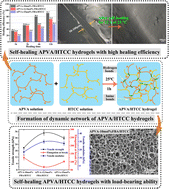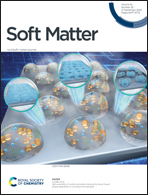A facile strategy to construct biocompatible poly(vinyl alcohol)-based self-healing hydrogels
Abstract
Endowing polymer hydrogels with good self-healing ability can autonomously repair damage with improved reliability. In this work, the benzaldehyde group was first grafted onto a biocompatible poly(vinyl alcohol) (PVA) molecular chain by esterification to obtain aldehyde-functionalized PVA (APVA), and the reversible imine bonds were further formed by reacting with amine groups on a quaternized chitosan (HTCC) chain. And thus, the self-healing APVA/HTCC hydrogel was fabricated with such imine bonds as crosslinking points together with hydrogen bonds. Many more imine bonds of hydrogels formed with increasing aldehyde content, resulting in increasing crosslinking density, decreasing average pore diameter and formation of a compact dynamic network, imparting certain mechanical strength and toughness with hydrogels. Furthermore, the healing efficiency of the hydrogel reached as high as 91.7% by self-healing without any external stimulus and its microstructure could be reconstructed after damage, exhibiting rapid recovery and dynamic features. Biocompatible self-healing PVA-based hydrogels exhibited great potential application in biomedical fields, like smart infill biomaterials, tissue engineering scaffolds, etc.



 Please wait while we load your content...
Please wait while we load your content...